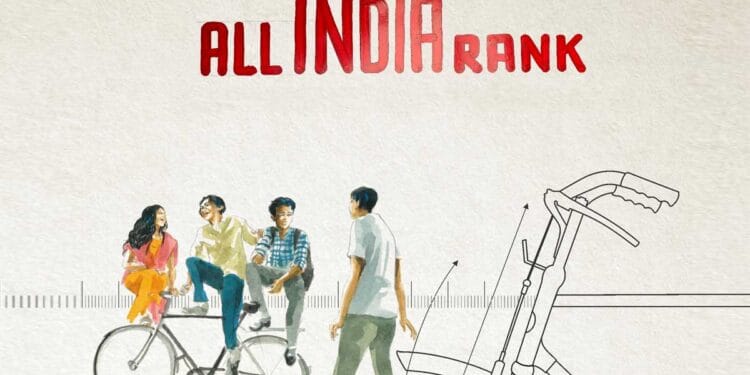Varun Grover’s directorial debut, “All India Rank,” takes us on a nostalgic journey through the pressure cooker of India’s competitive exam culture. Set in the late 90s, the film explores the lives of two friends, Vivek (Gaurav Sharma) and Gaurav (Pawan Rao), as they navigate the grueling pursuit of securing an “All India Rank” in the Joint Entrance Examination (JEE), a gateway to prestigious engineering colleges. While the premise promises an exploration of ambition, friendship, and societal pressures, “All India Rank” ultimately delivers a mixed bag, leaving us with both thoughtful moments and missed opportunities.
The Allure of Nostalgia:
The film masterfully captures the essence of the late 90s in India. From the grainy visuals to the nostalgic soundtrack featuring iconic songs and jingles, “All India Rank” transports us back to a simpler time. The film lovingly recreates the atmosphere of bustling coaching institutes, competitive study sessions, and the shared aspirations of young students chasing their dreams. This nostalgic element resonates deeply with those who lived through this era, offering a warm and relatable experience.
Beyond the Exam:
The film’s strength lies in its portrayal of the characters’ emotional journeys. Both Vivek and Gaurav grapple with internal struggles, balancing familial expectations with their own desires. Vivek’s quiet determination is contrasted with Gaurav’s rebellious spirit, creating a dynamic duo that keeps the narrative engaging. Their friendship, despite facing external pressures and competition, remains a central theme. The film explores their contrasting personalities and the challenges they face, offering a glimpse into the complex emotions intertwined with their pursuit of academic success.
The Weight of Expectations:
The film effectively portrays the societal pressure associated with the JEE. Parents, teachers, and society at large view the exam as a pivotal moment, placing immense expectations on students. The film realistically depicts the stress, anxiety, and emotional toll this pressure takes on young minds. However, at times, the portrayal of these pressures can feel exaggerated, bordering on melodrama. While highlighting the issue is important, the film could have benefited from a more nuanced exploration of the impact on individual psyches.
A Glimpse into the System:
“All India Rank” offers a glimpse into the complexities of the JEE system. The film portrays the rote learning, intense competition, and commercialization that often overshadow the true purpose of education. While this critique is insightful, it could have been explored further. The film could have delved deeper into the systemic issues and potential solutions, offering a more comprehensive analysis of the challenges faced by students and the education system as a whole.
Moments of Unfulfilled Potential:
Despite its strengths, “All India Rank” suffers from a few shortcomings. The romantic subplot between Vivek and a classmate feels underdeveloped and adds little to the overall narrative. The film also raises some intriguing questions about privilege and access to resources that are not fully explored. Additionally, the ending feels rushed and somewhat ambiguous, leaving some viewers wanting more closure.
Overall, “All India Rank” is a film with immense potential. It captures the essence of a bygone era, explores themes of friendship, ambition, and societal pressures, and offers a glimpse into the complexities of the education system. However, the film could have benefited from a more nuanced portrayal of its characters and themes, and a deeper exploration of the systemic issues it raises. Nevertheless, “All India Rank” remains a commendable debut that sparks important conversations and leaves a lasting impression.
































































